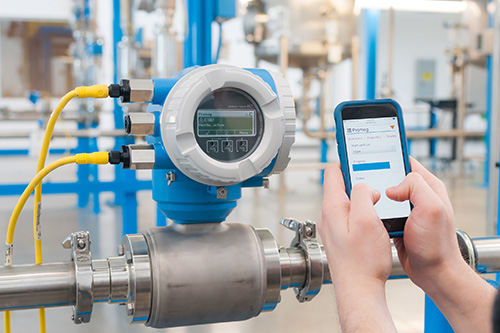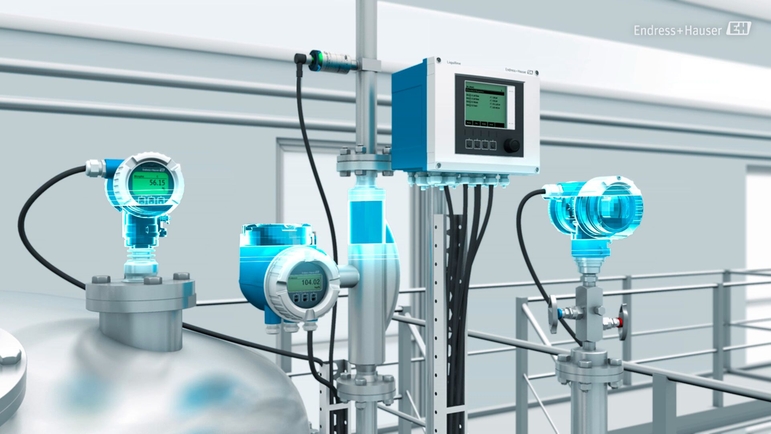SMART Transmitter Calibration
SMART Transmitters (Self-Monitoring, Analysis, and Reporting Technology) play an important role in measuring and controlling various parameters in biopharmaceutical laboratory and manufacturing processes. They verify precise and timely measurement and transmission of critical components, facilitating data analysis, and improving the accuract of experiments. Specializing in equipment calibration and certification services for biopharmaceutical companies throughout California, GL Technologies is an ISO 17025 certified company that provides equipment calibration services for our clients so they have accurate measurements and meet compliance requirements.
To speak with the experts about your SMART transmitter calibration needs, please fill out our online form or give us a call!
What is a SMART Transmitter?
A SMART transmitter is a device that is used for measurement and transmission of various parameters in scientific settings. They are designed to provide accurate and real-time measurements of parameters that include temperature, pressure, flow rate, and pH levels. These transmitters are equipped with intelligent electronics that allows them to process and analyze data, making them highly reliable. They also incorporate digital communication protocols that provides seamless integration with laboratory control systems and remote monitoring.

The Importance of SMART Transmitter Calibration
Calibration services several purposes:
Accuracy
SMART transmitters play an important role in the biopharm industry by convering physical parameters into measurable signales, allowing for accurate monitoring and process control. Calibration makes sure that these transmitters are providing precise and reliable measurements which is important to maintain product quality, safety, and process efficiency. It also minimizes the risk of errors and facilitates compliance with industry regulations. When SMART transmitters are calibrated regular, organization's can make informed decisions and improve productivity.
Compliance
Compliance and regulatory standards are important for any laboratory or manufacturing operation, and proper calibration of SMART transmitters is a fundamental aspect of meeting these obligations. It provides traceability and consistent measurements, giving lab employees and auditors confidence in data accuracy and allowing for informed decision making. If calibration is not performed it can lead to inaccurate readings, safety hazards, and non-compliance which can result in downtime and product quality issues (along with legal consequences).
Reliability
Accordiong to the SMART criteria (Specific, Measurable, Achievable, Relevant, Time-Bound), reliability is improved as it proves measurements obtained are dependable. Calibration also provides for timely detection of any deviations, allowing for corrective actions to be taken and preventing costly equipment failures and process disruptions. It also helps to maintain compliance and improves process control while enhancing overall operational efficiency.
Calibration Process for SMART Transmitters
There are a series of steps for calibrating a SMART transmitter to compare their measurements against known standards, while they vary based on equipment and the parameter being calibration here are a few general steps:
Selection of Calibration Standards
Before beginning the calibration procedure it's important to select the appropriate standards. These standards should be traceable to standards such as the ISO and have a known uncertainty. Once this has been set, the technician should verify the calibration equipment's functionality for pressure and temperature sources, digital multimeters, and software. Once the equipment is confirmed, it should connect the SMART transmitter to the calibration setup and input reference values based on the selected standards. The transmitter's output is then compared to the reference values and adjustsments are made as needed.
Preparation
During preparation it's also important to have the right tools and equipment including a calibrated references devices including a multimeter and signal generator. The individual performing the calibration needs to review the transmitter's specifications and documentation to understand its operating range, output signal, and calibration procedure. The transmitter should be isolated from the process so no pressure, temperature, or flow fluctutation can affect the calibration. The technician needs to verify the availability of the required calibration standards and perform any necessary pre-calibration checks so the process proceeds smoothly.
Adjustment
The adjustment is of course, one of the most important steps in the calibration process, where the transmitter's output is fine-tuned to match the known reference values. It starts by selecting the appropriate calibration equipment and establishing a controlled environment, then the transmitter's zero and span values are adjusted to align with the desired output. This involves comparies the readings of the transmitter against a calibrated reference instrument and making necessary changes until the readings match. Once the zero and span adjustments are complete, the linearity and hysteresis of the the transmitter are verified through additional tests.
Documentation
After the calibration points have been addressed and a final verification performed for accuracy, the calibration results should be documented including the date, technician's name, and any adjustments that were made during the process. This documentation serves as both a reference for future comparisons and helps to maintain the performance of SMART transmitters.

Benefits of SMART Transmitter Calibration
Calibrating SMART transmitters in biopharmaceutical processes provides several significant benefits:
Improved Product Quality
SMART transmitters contribute to the overall quality control processes to improve the reliability and consistency of the manufactured products. Calibration of these transmitters maintains accuracy and allows manufacturers to monitor critical variables such as pressure, temperature, or flow rate with precision. The precision level minimizes the risk of product defects reduces waste, and leads to improved product quality and customer satisfaction.
Better Process Efficiency
With accurate calibration, transmitter measurements obtained from various process variables become reliable and precise. This accuracy obtained allows operators to make informed decisions and take appropriate actions in real-time. SMART transmitters have advanced features like self-diagnostics and automatic calibration checks, which reduces the need for manual intervention and provide continuous accuracy over time. This saves valuable resources and minimizes downtime and maintenacne costs.
Maintain Compliance Requirements
As with all laboratory equipment SMART transmitters need to be calibrated to verify accuracy and performance to meet industry standards for ISO, cGMP, and FDA as a few examples of regulatory bodies. By utilizing SMART transmitter calibration, organizations can proactively address potential equipment drift and reduce measurement errors. This will maintain compliance with industry regulations and create an organizational culture of quality and reliability.
Why GL-Tec?
The GL Technologies team has the experience and equipment to calibrate all types of display equipment accurately. We understand the importance of accurate measurements in your specific industry, and we're committed to providing you with reliable, traceable calibration services.
Our calibration services are ISO 17025 accredited, and we follow strict quality control procedures. Your equipment is calibrated to the highest standards. We also provide fast turnaround times, so you can get back to work with minimal downtime.
To speak with the experts about your SMART transmitter calibration needs, please fill out our online form or give us a call!
To request a quote from GL-Tec, please fill out our online form and we will get back to you promptly.
CLICK HERE TO BEGIN

